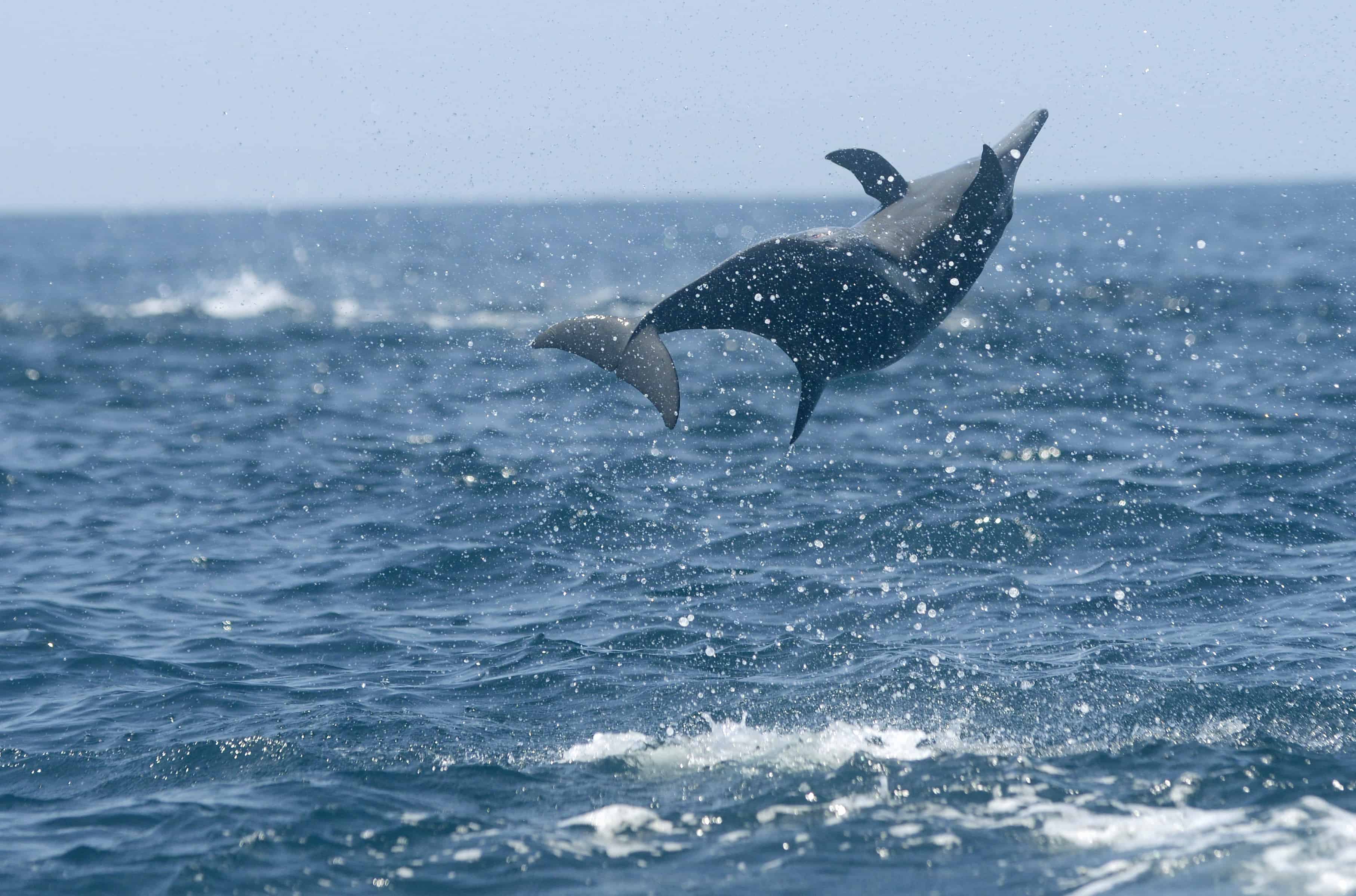This fish could not be the one that got away. When the giant yellowfin tuna began to plunge deep into the big blue, I swam hard after her. She wasn’t just any tuna, she was our Spy Tuna, armed with a high-definition camera in her eyes and mouth. I didn’t know exactly how many tens of thousands of dollars the one-of-a-kind tuna was worth, but I knew the bottom was around a kilometer below.
The engineering marvel known as Spy Tuna was helping us film spinner dolphin superpods off the Osa Peninsula. She was one of the stars of John Downer Productions’ “Dolphins – Spy In The Pod,” out last week on BBC1, and the show would really suffer without her.
She had filmed some of the most amazing dolphin discoveries ever seen, and she looked good doing it. Those who operated her used virtual goggles and a remote control. The cameras in her eyes and mouth captured the largest gatherings of dolphins ever filmed on earth, around 20 to 30 miles off of Drake Bay, on the southern Pacific coast. The painted spy flashed her yellow and blue colors, all the while filming the voice bubbles of dolphins conversing and filling the sea like shining stars. Spy Tuna witnessed superpods of thousands of dolphins merging into megapods for massive orgies.
She recorded the spectacle as dolphins corralled house-sized bait clusters of fish, then hundreds of giant rays showed up, soaring through and devouring at high speed. The rays left behind many stunned and dead fresh fish, which the dolphins snapped up. A good thing to be with dolphins is “poopular.” In other words, dolphins like to poop on their friends. The spinners gathered directly upstream of Spy Tuna and again and again sent their streaks of hormones all over her. She was very poopular, and that was why she got to see it all.
We now know what it looks like when dolphins surf a beach break wave from underwater. We learned that dolphins get high by passing around a potent puffer fish for a quick chew. We’ve seen a baby spinner dolphin learn her spin, and a baby bottlenose learn to hunt, and so much more. The show is sure to inspire a tsunami of awareness about dolphin awesomeness, while showing the world the future of high-tech ocean exploration. I hope it makes Costa Ricans think about how the world’s most famous wildlife documentary broadcasting corporation, with plenty of funding, chooses to come to the Osa Peninsula for dolphin filming.
With so many dolphins to snoop on, it should come as no surprise that Spy Tuna isn’t the only undersea infiltrator. The whiz kids at John Downer crafted Spy Turtle, Spy Nautilus Seashell, Spy Dolphin, Spy Ray and Spy Squid. They did not only film in Costa Rica but dispersed their infiltrators to some of the world’s choicest dolphin locations, like Madagascar and Honduras and the Florida Keys. The images they’ve captured tell a story we’ve never seen and show us things we never knew.
That isn’t to say that Spy Tuna is easy to replace. So when she diverted herself for the ocean floor, I powered after her, keeping the glint of her painted exterior in my sight. When she started to slow down, I was able to catch up, grab her and drag her back to the boat. When we surfaced together, the looks on the faces of the crew mirrored the relief I felt. The engineering marvel know as Spy Tuna could now keep helping us film the super- and megapods of the offshore Osa peninsula. We really need her.







